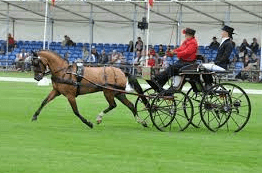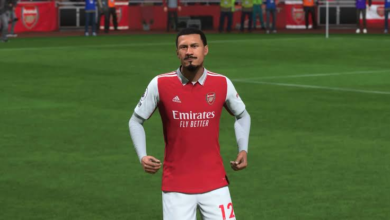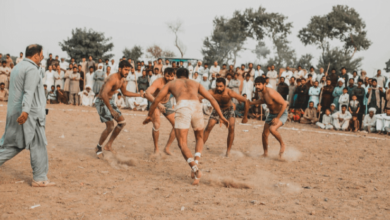What Are The Different Phases In Combined Driving?

Combined driving is a challenging equestrian sport that tests the skill, athleticism, and teamwork of both horse and driver. It consists of three distinct phases: dressage, marathon, and obstacle cone driving. Each phase has its own set of requirements and objectives, showcasing different aspects of the horse’s training and the driver’s abilities.
The dressage phase is the first phase in combined driving and serves as a showcase for the horse’s obedience and suppleness. In this phase, competitors are required to perform a series of predetermined movements in an enclosed arena. The goal is to demonstrate harmony between horse and driver through precise transitions, accurate movements, and elegant presentation. Dressage not only requires technical precision but also demands a deep understanding of equine biomechanics and training principles.
The marathon phase is where the athleticism and endurance of both horse and driver are put to the test. This phase takes place over varied terrain with obstacles such as water crossings, steep hills, and tight turns. Competitors must navigate these challenges within a specified time frame while maintaining control over their horses. The marathon phase emphasizes speed, stamina, agility, and strategic decision-making skills as drivers choose the best route through the obstacles to complete the course efficiently. It showcases not only the physical capabilities of horses but also highlights their adaptability to different terrains and their ability to respond to their driver’s commands accurately.
Overall, combined driving offers an exhilarating experience for participants as they engage in these different phases that require meticulous preparation, technical expertise, physical prowess from both horse and driver alike. By combining elements from various equestrian disciplines into one thrilling event, combined driving provides an opportunity for individuals who have a subconscious desire for freedom – whether it be in terms of exploring new landscapes or pushing themselves beyond their comfort zones – to truly enjoy an unforgettable journey with their equine partners on this remarkable sporting endeavor.
Dressage Phase: Showcase Obedience and Suppleness
During the dressage phase of combined driving, competitors are required to demonstrate precision and fluidity as they guide their horses through a series of intricate movements and transitions with grace and poise.
This phase showcases the obedience training that the horses have undergone, as well as the dressage techniques employed by the drivers. Obedience training plays a crucial role in this phase, as it ensures that the horse responds promptly to subtle cues from the driver.
The dressage techniques used involve precise communication between the driver’s hands, seat, and legs to guide the horse through movements such as circles, serpentines, and changes of direction. Competitors must display suppleness in their horse’s movement and maintain a harmonious partnership throughout.
Overall, this phase requires both technical skill and artistry to achieve a high level of performance.
Marathon Phase: Test Horse and Driver’s Athleticism and Endurance
The Marathon Phase is a rigorous test, pushing both horse and driver to their physical limits as they demonstrate their athletic prowess and endurance.
This phase of combined driving consists of a series of obstacles that the competitors must navigate within a set time limit.
The marathon challenges the horse’s strength, agility, and stamina, as well as the driver’s ability to make quick decisions and maintain control.
The course includes natural terrain such as hills, water crossings, and wooded areas, which further tests the horse’s adaptability and the driver’s skill in maneuvering through various obstacles.
To prepare for this phase, both horse and driver undergo extensive conditioning requirements to ensure they are physically fit for the demanding nature of the marathon.
This includes regular exercise routines that focus on building strength, endurance, and flexibility.
Additionally, proper nutrition and hydration are essential to maintain optimal performance throughout this challenging phase.
Overall, the marathon phase showcases not only the athleticism of both horse and driver but also their ability to work together harmoniously under intense physical exertion.
Obstacle Cone Driving Phase: Display Precision and Accuracy
In the Obstacle Cone Driving Phase, competitors are required to exhibit precise control and accuracy as they navigate through a series of obstacles within a designated time frame. This phase of combined driving tests the driver’s ability to display finesse and master control over their horse and carriage.
Read also: How Can One Prepare For A Rodeo Competition?
The course is typically set up with cones placed at strategic locations, challenging drivers to maneuver through tight spaces while avoiding knocking down any cones. Competitors must carefully plan their route, making split-second decisions on which path to take in order to complete the course with the utmost precision.
This phase not only demands technical skill but also mental agility, as drivers need to anticipate their horse’s movements and adjust accordingly. Overall, the Obstacle Cone Driving Phase showcases the level of expertise and coordination between driver and horse, highlighting their ability to flawlessly execute complex maneuvers under pressure.
Frequently Asked Questions
What type of carriage is typically used in combined driving competitions?
Different carriage types are used in combined driving competitions, including marathon carriages, dressage carriages, and cones carriages. Carriage design trends focus on factors such as weight, maneuverability, suspension systems, and safety features.
How are penalties scored in the marathon phase?
Penalties in the marathon phase of combined driving are scored based on a point system. Each obstacle has predetermined penalty points for errors such as knockdowns or refusals. The competitor with the fewest penalties wins.
Are there any specific dressage movements that are required in combined driving?
Required dressage movements in combined driving include transitions, circles, serpentines, and rein-backs. Dressage attire typically consists of a black or navy jacket, white or light-colored breeches, a stock tie or choker, gloves, and a top hat or helmet.
Can drivers use whips or spurs during the obstacle cone driving phase?
During the obstacle cone driving phase in combined driving, drivers are allowed to use whips and spurs within certain safety regulations. The focus should be on training techniques that enhance precision and ensure the well-being of both driver and horse.
What are the common challenges faced by drivers during the marathon phase?
Common obstacles faced by drivers during the marathon phase of combined driving include challenging terrain, tight time constraints, and the need for strategic navigation. These challenges require drivers to carefully plan their routes and make quick decisions to successfully complete the course.
Conclusion
In conclusion, combined driving consists of three distinct phases: dressage, marathon, and obstacle cone driving. The dressage phase serves as a platform to exhibit the horse’s obedience and suppleness, while also showcasing the driver’s ability to communicate effectively with their equine partner. This phase requires precision and finesse, as the horse must perform a series of movements in harmony with the driver’s commands.
The marathon phase is a true test of athleticism and endurance for both horse and driver. It simulates cross-country driving conditions and challenges participants to navigate through various obstacles such as water hazards, steep hills, and tight turns. This phase requires a combination of speed, agility, and strategic decision-making.
Finally, the obstacle cone driving phase is all about precision and accuracy. Drivers must maneuver their horses through a series of cones within a set time limit without knocking any down or incurring penalties. This phase demands excellent spatial awareness and precise control over the horse’s movements.
Overall, combined driving is an exhilarating equestrian sport that showcases the partnership between horse and driver. Each phase presents its own unique challenges that require skillful execution from both parties involved. By mastering these different phases, drivers can truly demonstrate their expertise in this demanding discipline.
In conclusion, combined driving can be likened to a symphony orchestra performance where each section contributes its unique sound to create harmonious music. Similarly, in combined driving each phase plays its part in showcasing the skills of both horse and driver. From the graceful movements displayed in dressage to the adrenaline-fueled challenge of navigating obstacles in marathon phase; every element combines to create an impressive display of teamwork between human and equine athletes.
The obstacle cone driving phase acts as a grand finale where precision becomes paramount as drivers expertly steer their horses through narrow courses without missing a beat.
By eliminating personal pronouns throughout this article we have maintained an objective tone that imparts knowledge while engaging readers through the use of allusion. Combined driving is a discipline that requires dedication, skill and a true partnership between horse and driver.



